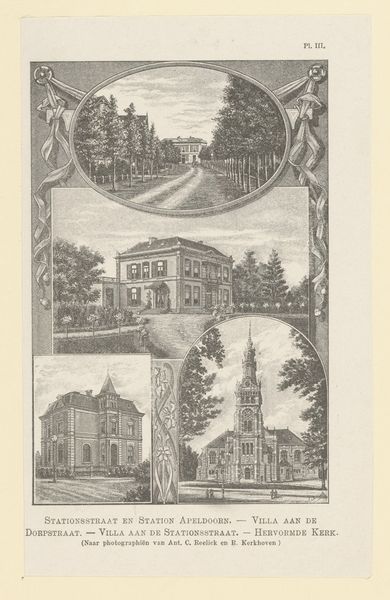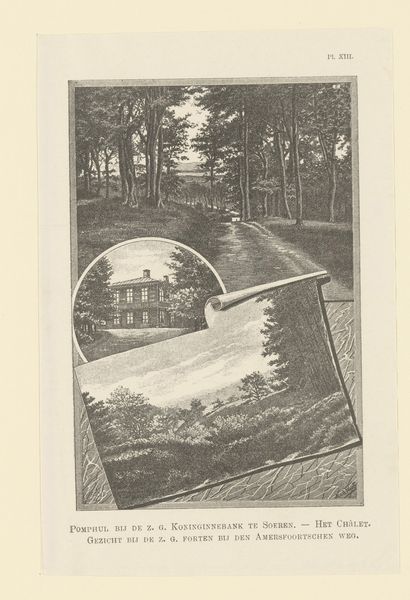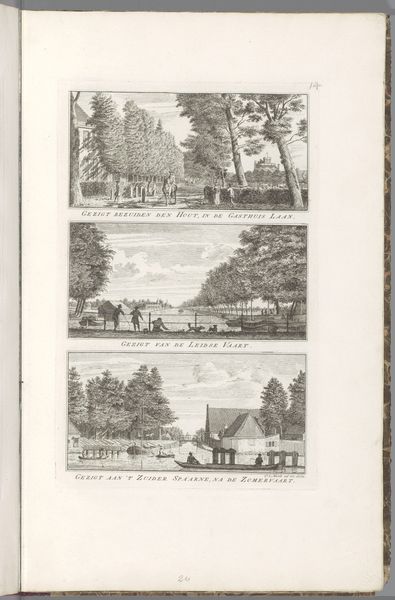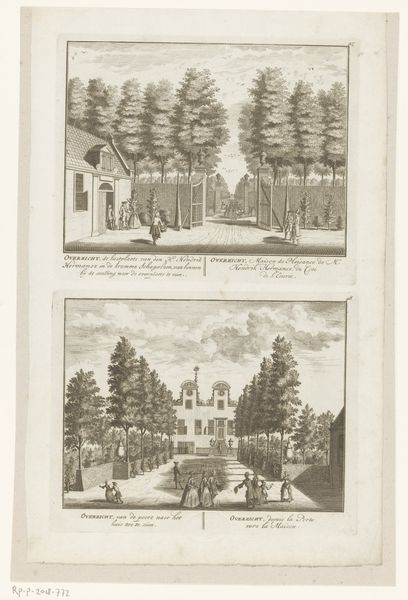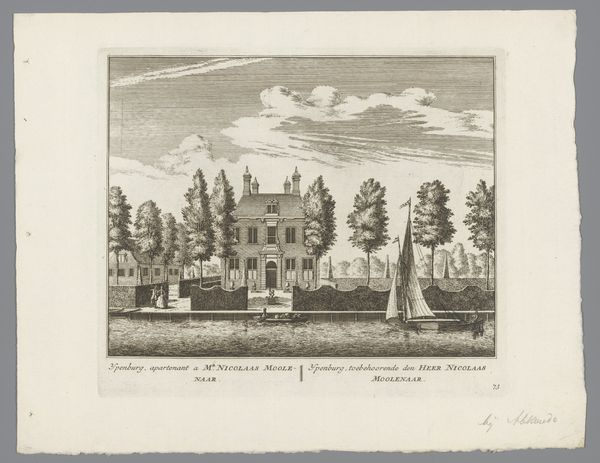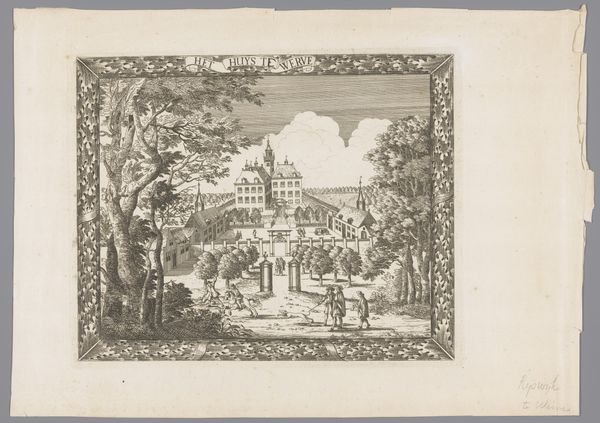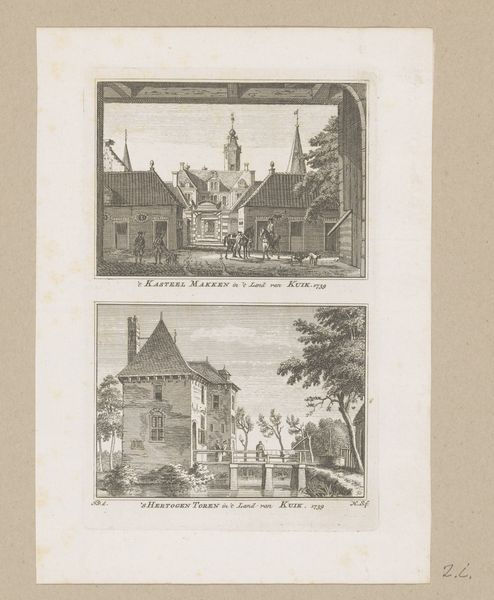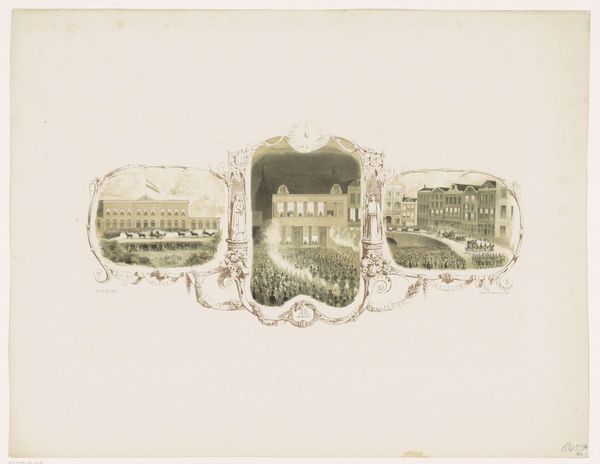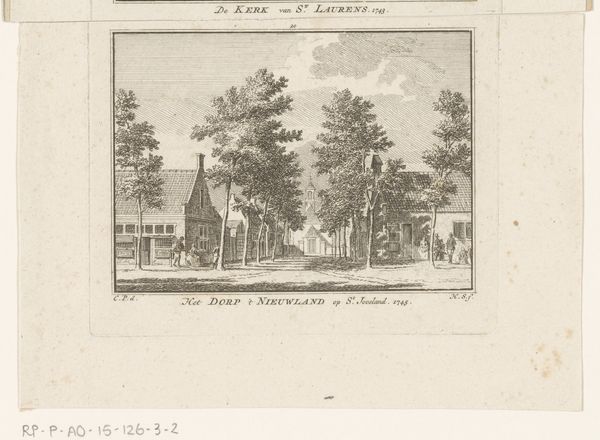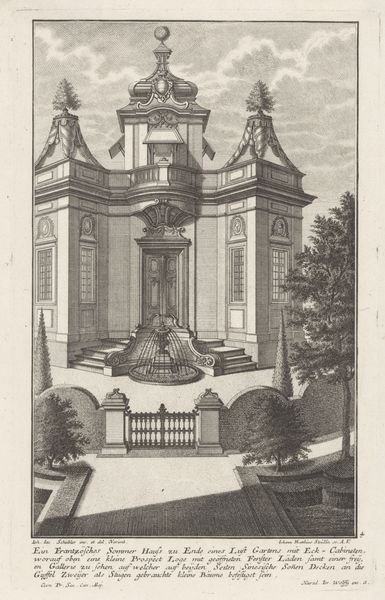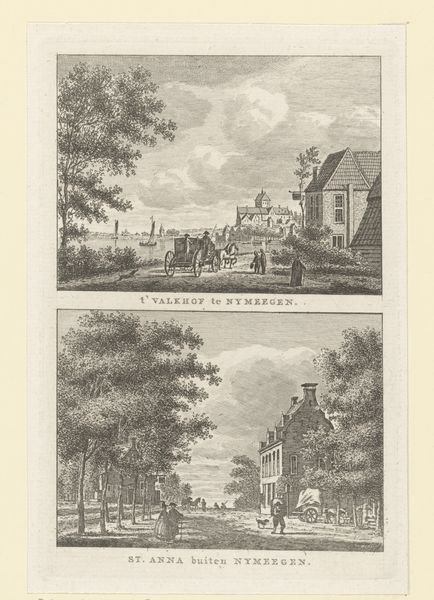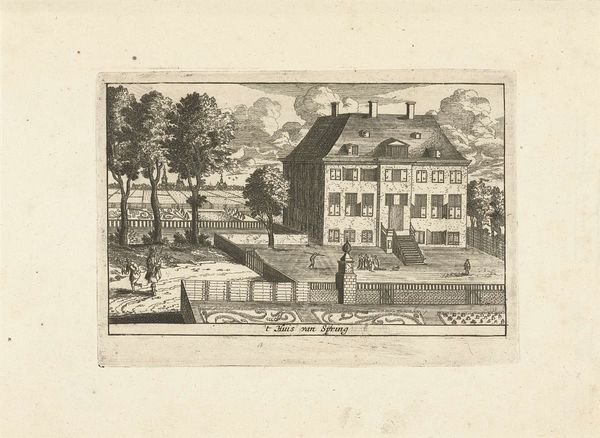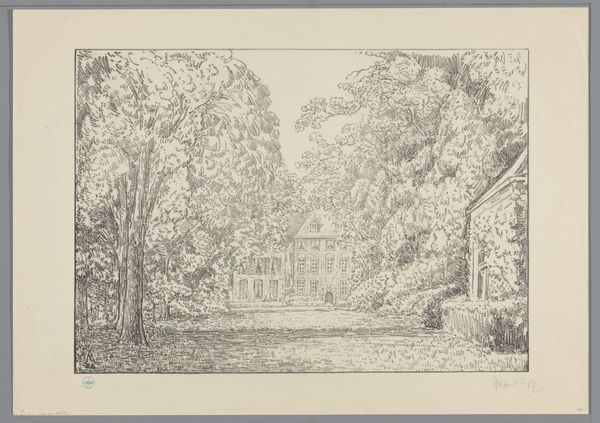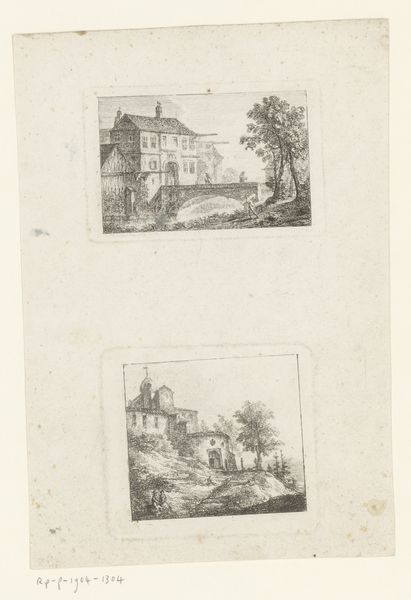
print, engraving
# print
#
arts-&-crafts-movement
#
old engraving style
#
traditional media
#
landscape
#
intimism
#
park
#
cityscape
#
engraving
Dimensions: height 182 mm, width 115 mm
Copyright: Rijks Museum: Open Domain
Curator: This piece, created between 1890 and 1900, is titled "Oranjepark in Apeldoorn," and is a print made by Noach van der Waals. Editor: My first impression is one of serenity, and of something… deliberately antiquated. The use of what appears to be an old engraving style almost seems like a conscious choice to evoke a feeling of nostalgia. Curator: Absolutely. The artist utilizes the engraving medium to establish a powerful connection to the past. Engravings have a visual language that communicates order, detail, and craftsmanship, which connects to the core principles of the Arts and Crafts movement—rejecting industrial production and celebrating handcrafted beauty. Editor: Right. The work emphasizes process. I see a distinct rejection of quick, mass-produced imagery. The labor is evident in the intricate lines and shading— a conscious act to emphasize skill and care. Curator: I’d agree with that. But also notice how Van der Waals uses imagery related to intimacy. The theme of the park becomes one of a quiet haven— away from industrialised landscapes. And while this connects with Arts and Crafts in a direct sense, parks themselves also take on an element of symbolic importance too. A manicured or tended space, like this Oranjepark, stands in marked opposition to raw or untamed nature, speaking about social values connected to both progress and control. Editor: That idea of ‘control’ leads back to materiality as well. There is such a strong element of labor suggested by those repeated lines, carefully plotted to depict shade and light across multiple scenes in this image of images, we’re clearly dealing with skilled artisanship. This engraving’s method mirrors that which the Arts and Crafts movement tried to project into consumer culture and beyond. Curator: So, when considering Van der Waals' work here, perhaps its deeper meaning rests not merely in its depiction of the Oranjepark, but as an ideological space— where artistic philosophy, historical symbols, and technique all come together. Editor: It leaves you pondering the interplay of medium, labor, and those idealized visions of landscapes, and perhaps how consumerism and craft began to merge at this time.
Comments
No comments
Be the first to comment and join the conversation on the ultimate creative platform.
